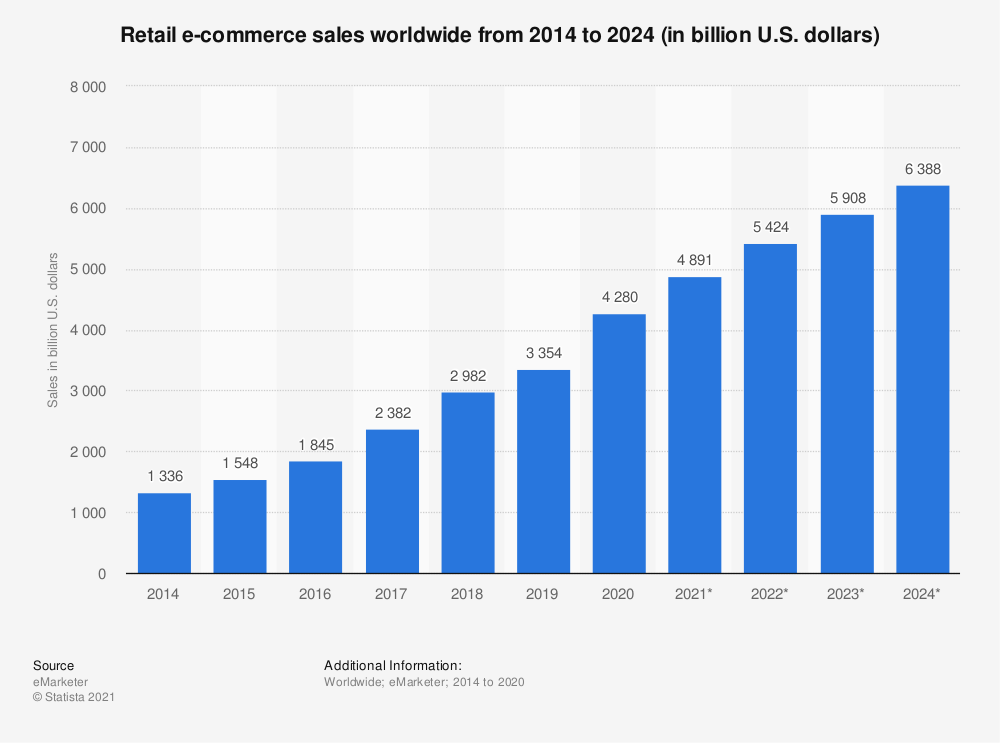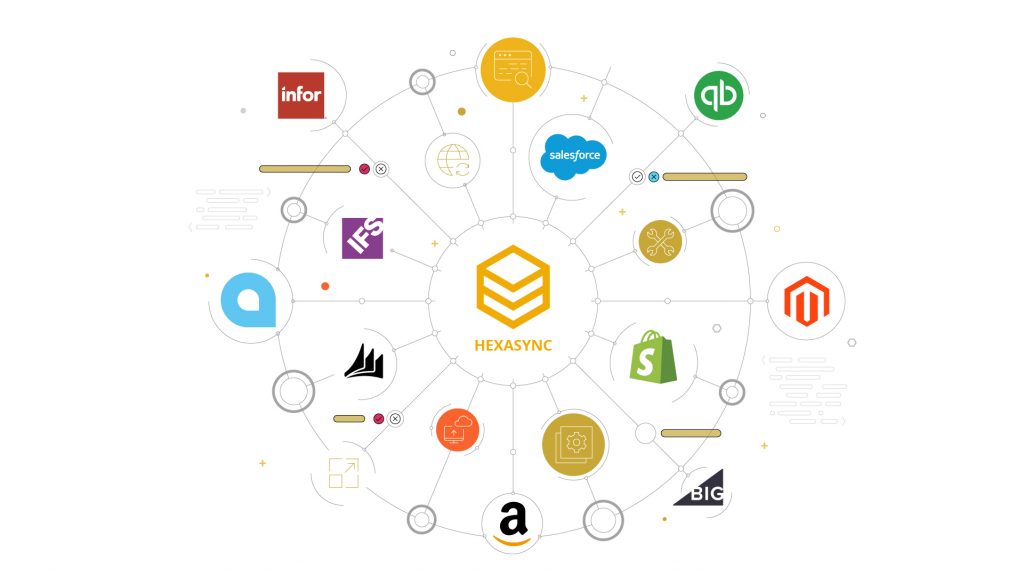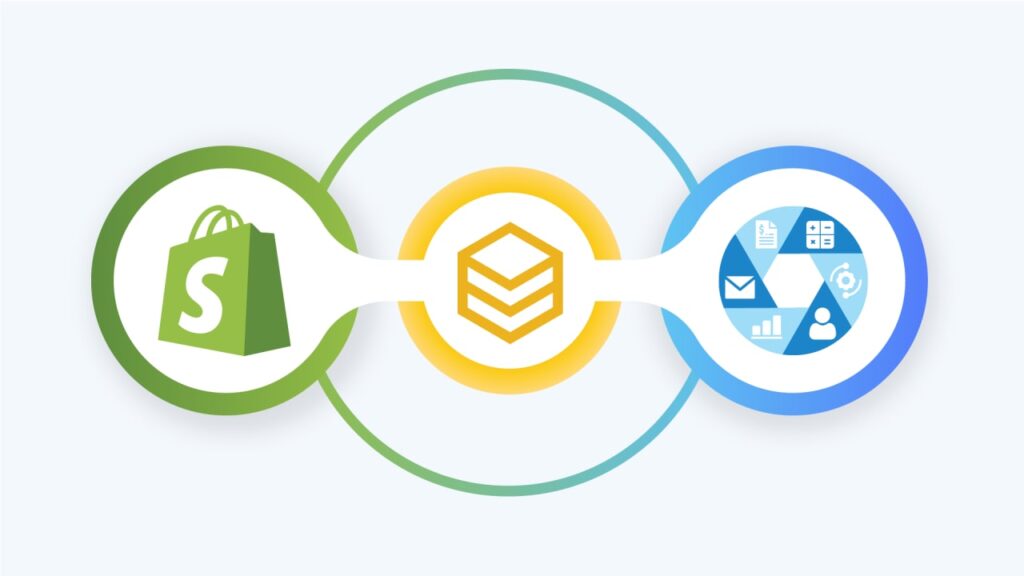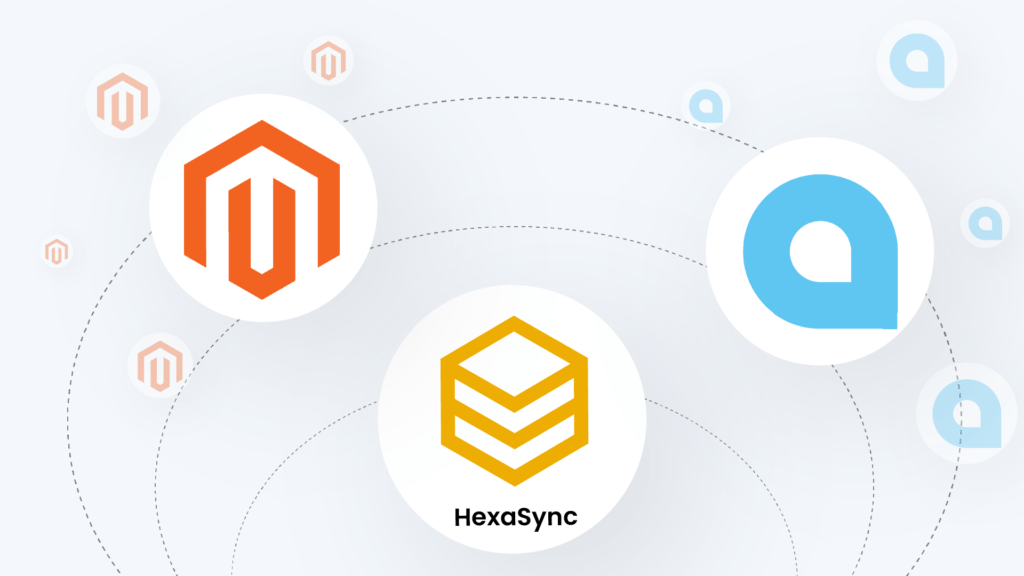E-commerce is constantly changing, but it has changed and adapted at an incredible rate in the last year due to the Covid pandemic. If eCommerce stores do not evolve at the same rate, their businesses may miss out on major development potential. It’s more vital than ever for eCommerce owners to stay current on best practices. These are the top eight trends that will affect businesses in the coming months and years.
Table of Contents
The future of eCommerce
In 2020, retail eCommerce sales worldwide amounted to 4.28 trillion US dollars and e-retail revenues are projected to grow to 5.4 trillion US dollars in 2022. Online shopping is now one of the most popular online activities worldwide.
Businesses boosted their digital transformation efforts amid global upheavals in 2021, and disruption wasn’t just a term. Consumers who had no other option flocked to eCommerce for whatever they needed in their everyday lives.

Within the 12-month pandemic period from March 2020 to February 2021, a total of $844 billion was spent online. It is estimated that the fiscal year 2021 will bring in between $850 billion and $930 billion, based on current growth rates. The epidemic resulted in a once-in-a-lifetime jump in internet expenditure, comparable to a 20% increase, and future development is likely to build on this foundation. eCommerce is predicted to reach its first trillion-dollar year in 2022.
These shifts in purchasing habits may slow significantly as individuals return to their regular routines, but they are far from over. Because eCommerce has evolved from a source of dependency to simple convenience, brands will need to adjust their strategy accordingly.
Slow responses drive customers away
Slow-loading web pages are less tolerated by buyers now that they spend more time online. Performance issues might force potential customers to leave your site before it even loads, but they can also have unexpected consequences.
Slow page loading rates might hurt your Google search rankings, resulting in fewer organic visitors and purchases. If your web pages take three seconds or more to load, speeding them quicker can have a significant impact on your bottom line.

Furthermore, Google’s PageSpeed Insights may be used to analyze the load performance of your eCommerce website for free.
The practical implication of this lesson is that, in order to stay competitive in the customer acquisition market, your company must prioritize performance monitoring for your digital shop.
Mobile shopping will prosper
Customers may shop on their phones from anywhere, which is essential in today’s society. You’ll be missing out on major opportunities if your eCommerce site isn’t responsive on mobile or through web apps. Mobile shoppers want the added convenience of being able to pay with their phones.
According to Statista, 73 percent of eCommerce sales will be made on a mobile device by the end of 2021.

However, online retailers have struggled to keep up with the surge in mobile traffic. Despite the fact that mobile devices account for 60% of visitors to eCommerce websites, they only account for 40% of transactions. The issue is that mobile web retailers may not provide an exceptional buying experience. The following are some of the most typical issues:
- Site loading time
- Shoppers must zoom in and out to read small text and images.
- Limited functionality necessitates switching to the desktop mode for mobile users.
- Product information is insufficient.
You should consider different ways to optimize your mobile performance like reducing the size of images, using responsive themes, and streamlining navigation. Ensure a smooth checkout process on your mobile and mobile-first technologies like Progressive Web Applications (PWAs). PWA’s load faster than a website and help increase search engine rankings.
Make the purchasing process easier
How simple is it for a regular shopper to interact with your store? A user-friendly interface and user experience are essential for your website’s success. Put product recommendations at the bottom of the page, and provide “often purchased together” possibilities as well.
Keep navigation as simple as possible; make it as easy as possible for visitors to move from one product page to the next, and track their behavior across the site to provide them with personalized recommendations.
Make it simple for your customers to switch from one product to the next. Your ultimate goal is to increase the number of time users spend on your website. The longer time people spend on your site, the more likely they are to make a purchase. It’s one of those straightforward eCommerce website best practices to adhere to.
Take advantage of multiple payment options
One of the key reasons why buyers choose a particular brand is because of the payment choices available. Customers will not buy from your eCommerce store if you do not accept their preferred payment option.
E-commerce platform like Shopify has their own integrated payment gateways. With Shopify Payments, store owners will save even more time when setting up third-party payment gateways is reduced. Payment processing will take place directly on the sales website without having to redirect or send external payment information.

Purchases can be abandoned due to a complicated payment process. As a result, keeping things simple can help speed up the transaction. When shopping from major online retailers, customers are already accustomed to a rapid checkout experience that does not require them to provide excessive information.
Most eCommerce sites accept payment using Paypal, Apple Pay, and other methods. Payment centralization is expected to progress in the future years, according to reports. When you shop from a foreign company, for example, you can expect your purchase to be processed through your selected local payment provider. It is recommended that people doing business on a worldwide scale have local payment alternatives and consolidate all payments on a single platform.
The standard will be omnichannel retailing
Customers want to view material in a variety of ways, which most firms are already aware of. Tablets, smartphones, and computers are only the beginning. Brands are developing new ways to promote their products using social media, as we’ve seen in earlier developments.
For example, Facebook Shops allows businesses to establish a personalized online storefront where customers can search, explore, and buy things using Instagram and Facebook applications.

Meanwhile, Instagram has been testing a live shopping feature that allows businesses to showcase things in a live video while customers can explore the featured items and make purchases.
Make contact with influencers in your industry and ask them to assist you in creating content for your company. Build a relationship with them by first assisting them in expanding their audience and/or offering them free items. Use popular hashtags on social media feeds to create relevant content for a wider audience.
Manual data entry will fall behind
Both the sales and supply sides of your organization must be integrated into your eCommerce platform. Integrate a point-of-sale system to keep track of your inventory. A POS system will provide you with crucial information about your consumer and will assist you in measuring and analyzing the entire trip. You’ll be able to track performance more efficiently this way, and everyone will be working toward the same business-critical criteria.

B2B business model that turns into eCommerce for sales to move forward should also integrate your website into other systems. eCommerce is a great way to generate revenue, but certain things may not be possible within a B2B setting.
For example, can you view all of your products and customer in one single interface? While selling across multiple channels, real-time data is the key to providing a seamless experience for customers.
Use your own customer data for better decisions and consider utilizing data from more than one source. Integrate with CRM systems and stay up to date thanks to detailed analytics. Customers’ behavior changes every day, however, only business owners know what they want to deliver the best experience possible.
Enhanced online buying with augmented reality
For eCommerce, augmented reality (AR) has been a game-changer. This type of technology allows shoppers to see the thing they’re looking for up close, which aids in their purchasing decision. In certain areas, such as fashion and home decor, AR has a significant impact on the purchasing experience since it allows customers to get a better feel for an item without having to see it in person.
As more individuals work and shop from home, more retailers are turning to augmented reality to provide a more personalized experience. The following are some examples of augmented reality in eCommerce:
- Fitting rooms and virtual makeup counters
- AR-enabled pop-up shops
- Consumers can view how appliances would look in their own homes with virtual appliance installations.
- Consumers can see how their living room might look with new furnishings in virtual home showrooms.
- Businesses can use virtual office renovations to examine how a new coffee machine might appear in the break room or how new chairs would match a conference room.
Final words
To help you differentiate your company, pay attention to best practices and new trends. So which eCommerce trend will you take advantage of?
Businesses that want to dominate the market should get ready to adapt to the current trends as soon as possible. Mobile commerce, omnichannel shopping, AI, and augmented reality will almost certainly be commonplace in 2021. To persuade more clients to choose their brand, more online businesses will begin taking influencers to leverage their audiences. Dynamic pricing will continue to be a successful method of attracting customers.















































